Cheremsha, also known as Tjeremsha and Черемша are a wild allium used to make one of the most interesting traditional foods I've tasted to date.
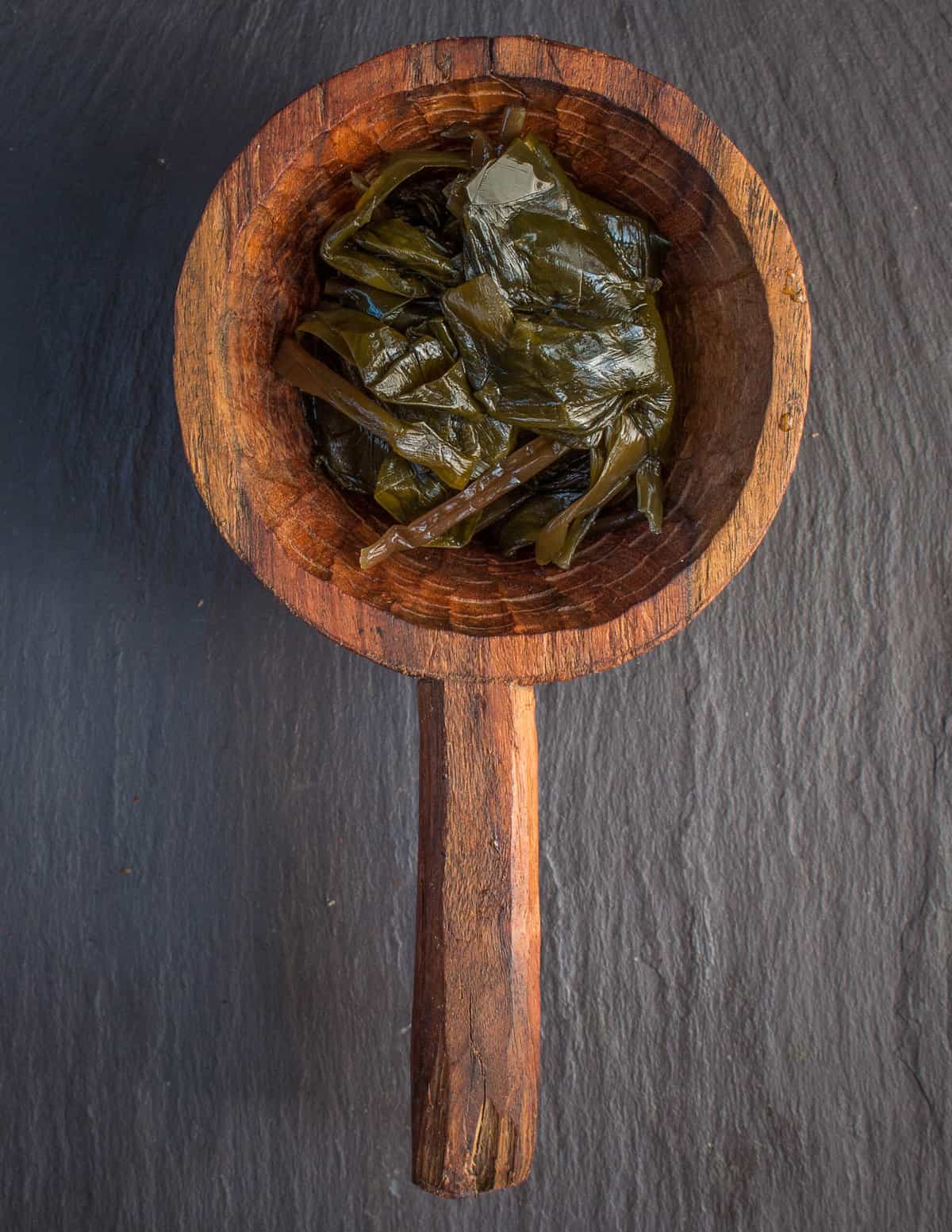
Essentially, you can think of them as lacto-fermented ramp leaves, although the traditional plant used to make the ferment is Allium victorialis-the victory onion, reputed to have been brought to Eastern Europe by the Vikings. After being salted and fermented, they'll become solenaya cheremsha.
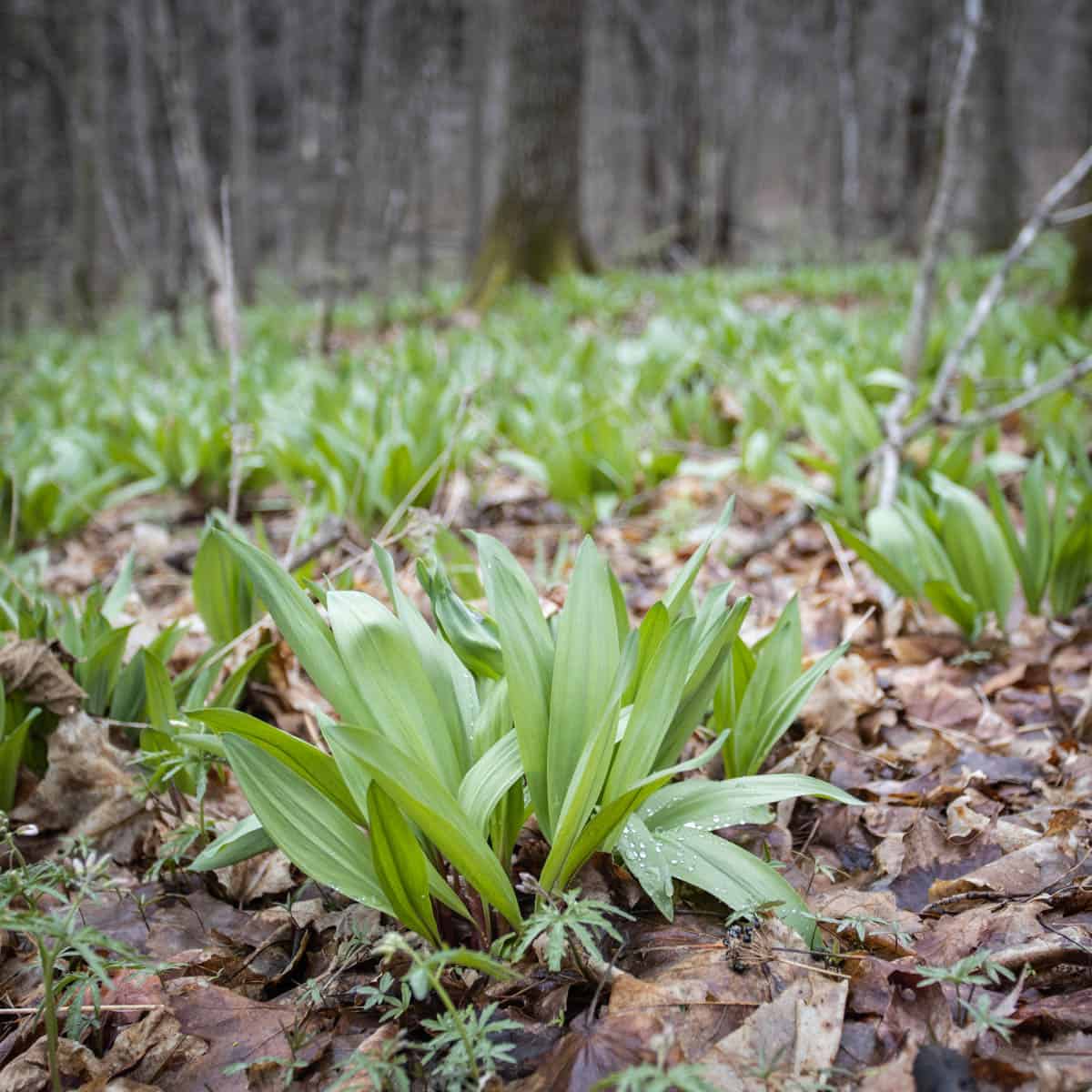
There's little documentation online or in books about this that I can see, probably because I don't speak Russian.
I learned about the preserve through Stephen Barstow's book. I finally got to meet Stephen at the Midwest Wild Harvest Festival when he gave a keynote a few years ago.
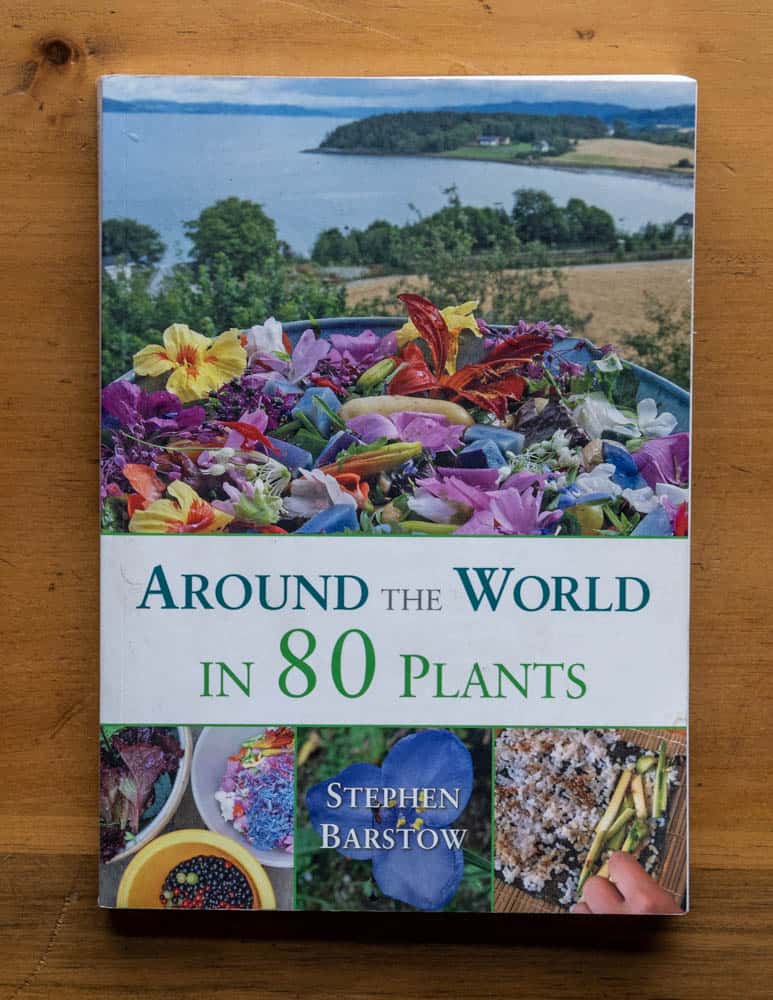
Barstow's book: Around the World in 80 Plants is one of my favorite of it's type. The book describes a lot of obscure plants you can collect and grow, as well as edible ornamentals, or edimentals, as they're called.
I put a link to the book at the bottom of this post. Here's the excerpt on cheremsha from the book:

After I read the passage in the book, I knew I had to try my hand at fermenting some ramp greens.
The funny thing is though, I'd already tried them, a number of times, but, I wasn't exactly sure how to feel about them.
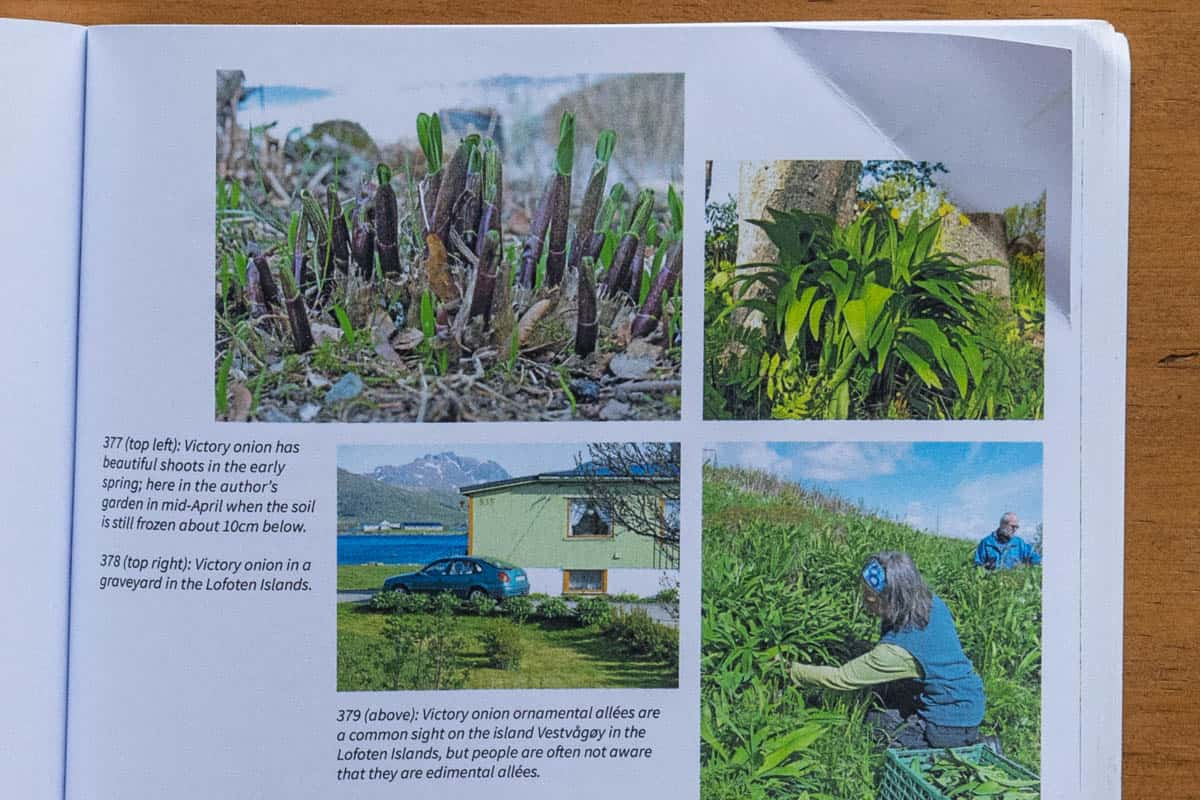
The aroma of the fermented leaves is so powerful that when I first smelled them I wondered if they were safe to eat-I'm not alone here.
At least two other chefs I've spoken to after falling in love with cheremsha have told me they tried fermenting ramp leaves and ended up tosing them as the aroma was so strong they thought it'd gone bad. Both were experienced fermenters.
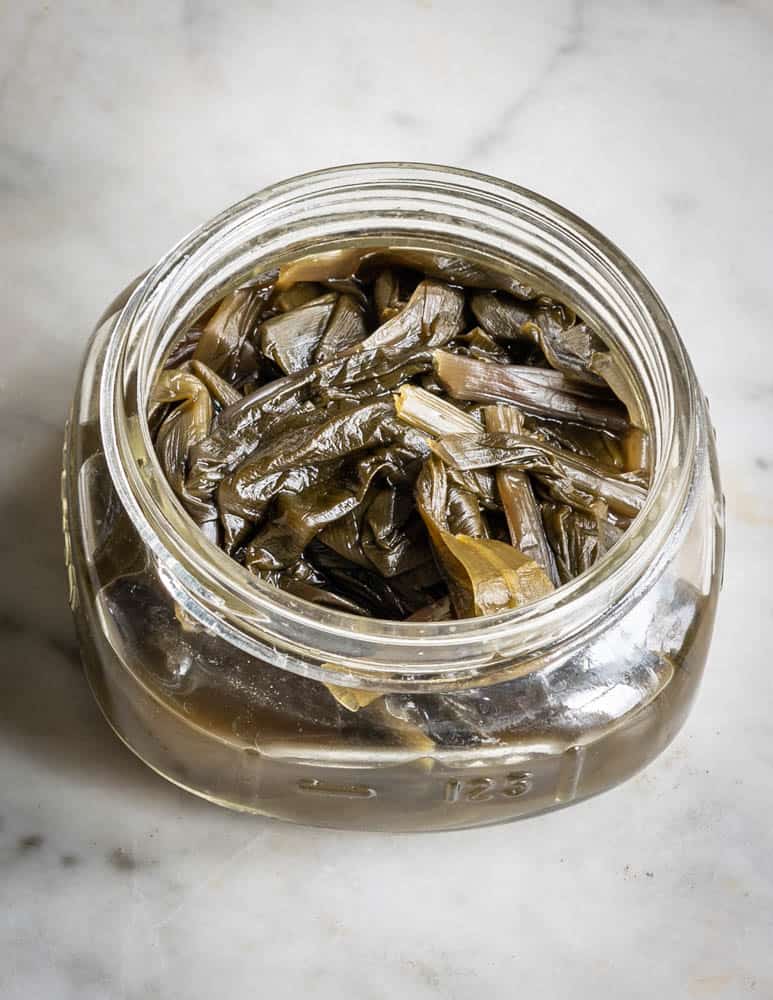
Part of the magic of fermentation is the transformation that ingredients undergo, and ramp leaves (along with their close cousins) experience one of the most dramatic changes I've encountered.
Mixed with salt and left to ferment, the aroma of the leaves grows exponentially stronger, becoming the sort of polarizing food that will either terrify, or seduce you.
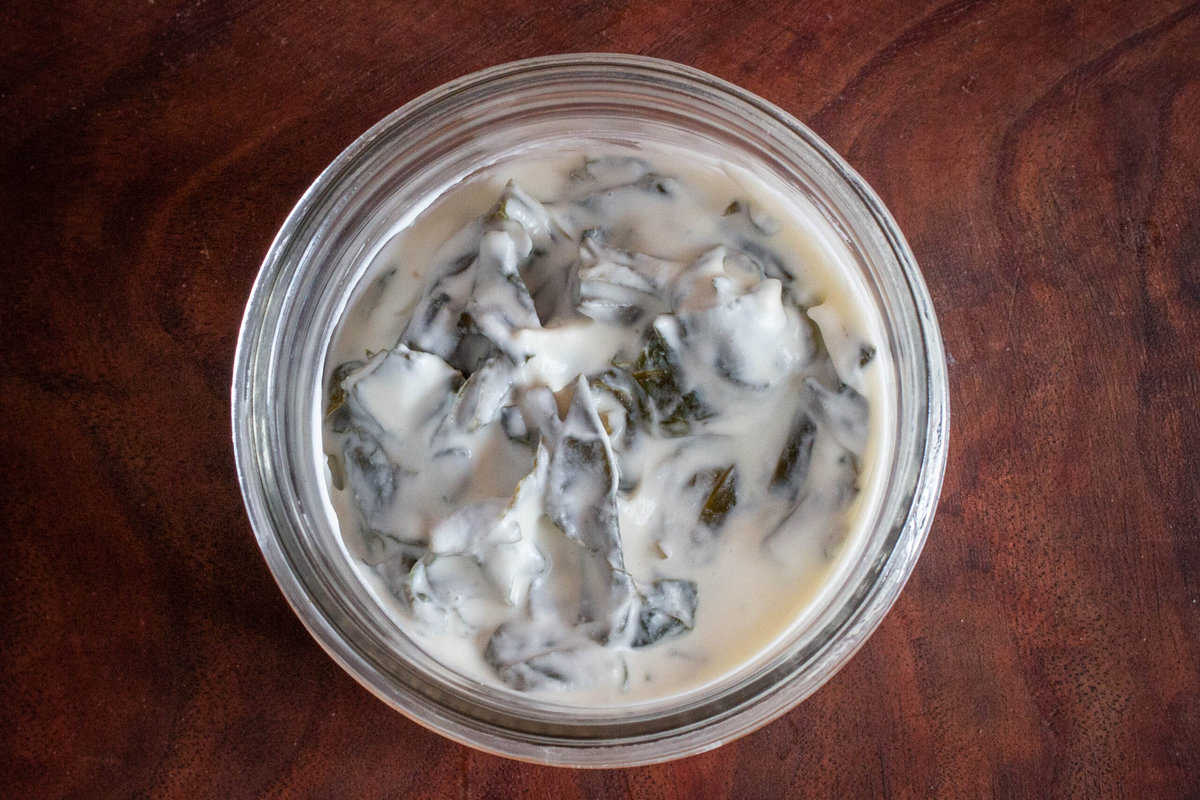
It's hard to describe the potency of sour allium greens, but as I've mentioned before, weaponized garlic comes close. One thing's for certain: the aroma will offend timid palates, separating true believers from casual eaters who just sample a few ramps every spring.
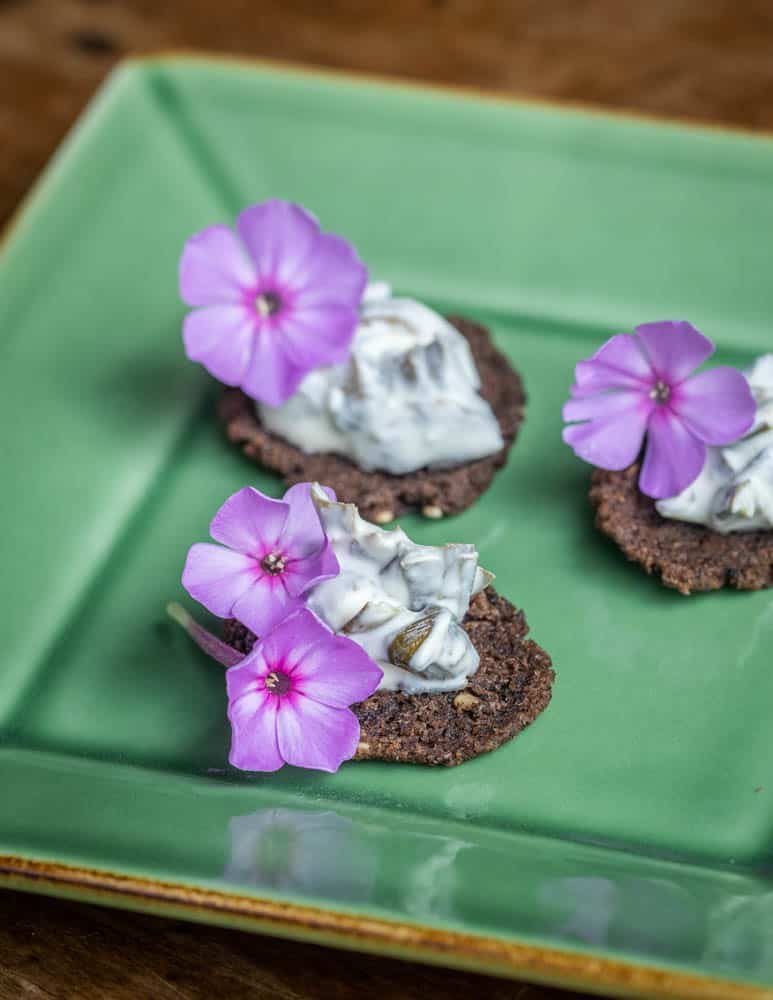
Traditional vs Modern Methods
Traditionally, as with sauerkraut, the leaves of the plant are mashed up or pounded with salt, put into a crock or other fermentation vessel, weighted down, and allowed to sour.
The traditional method works, but, after making this for the past few years now, I've developed a method I prefer over pounding and mashing that I think does more justice to the plant.
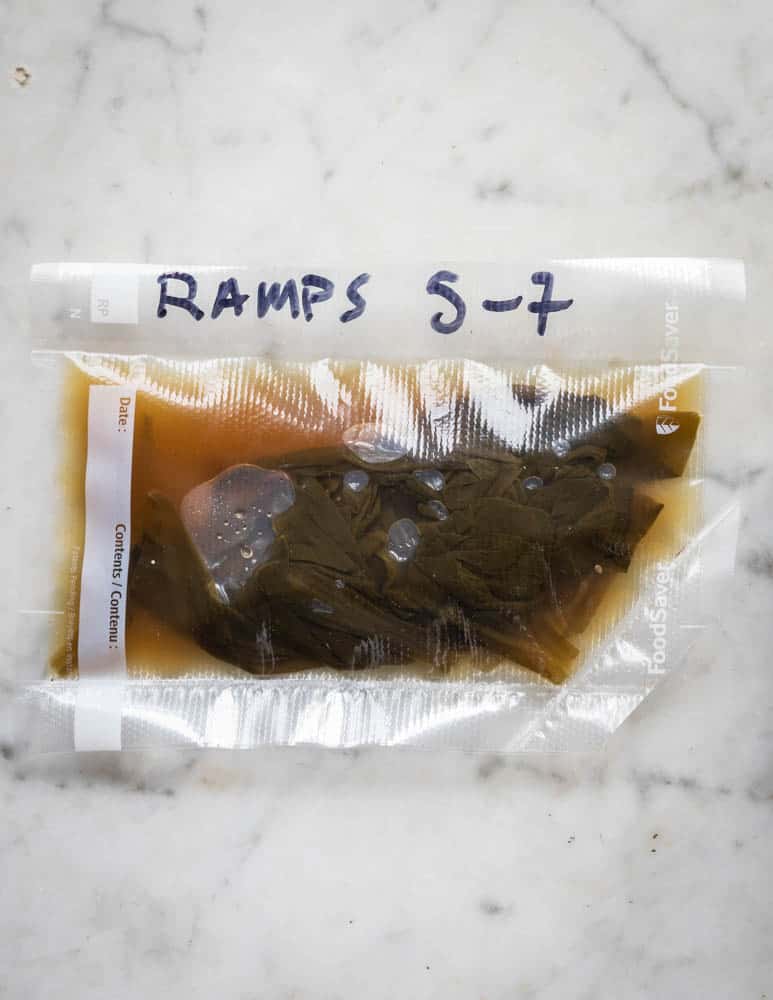
Mashing vs vacuum sealing
Ramp leaves are delicate things, and mashing or pounding them with some salt breaks them up a bit.
This was probably the safest, and most effective way to make the traditional ferment, but, if you mix the leaves with salt, and simply vacuum seal them they ferment like a dream, and the smell won't be very noticeable, until the bag is opened.
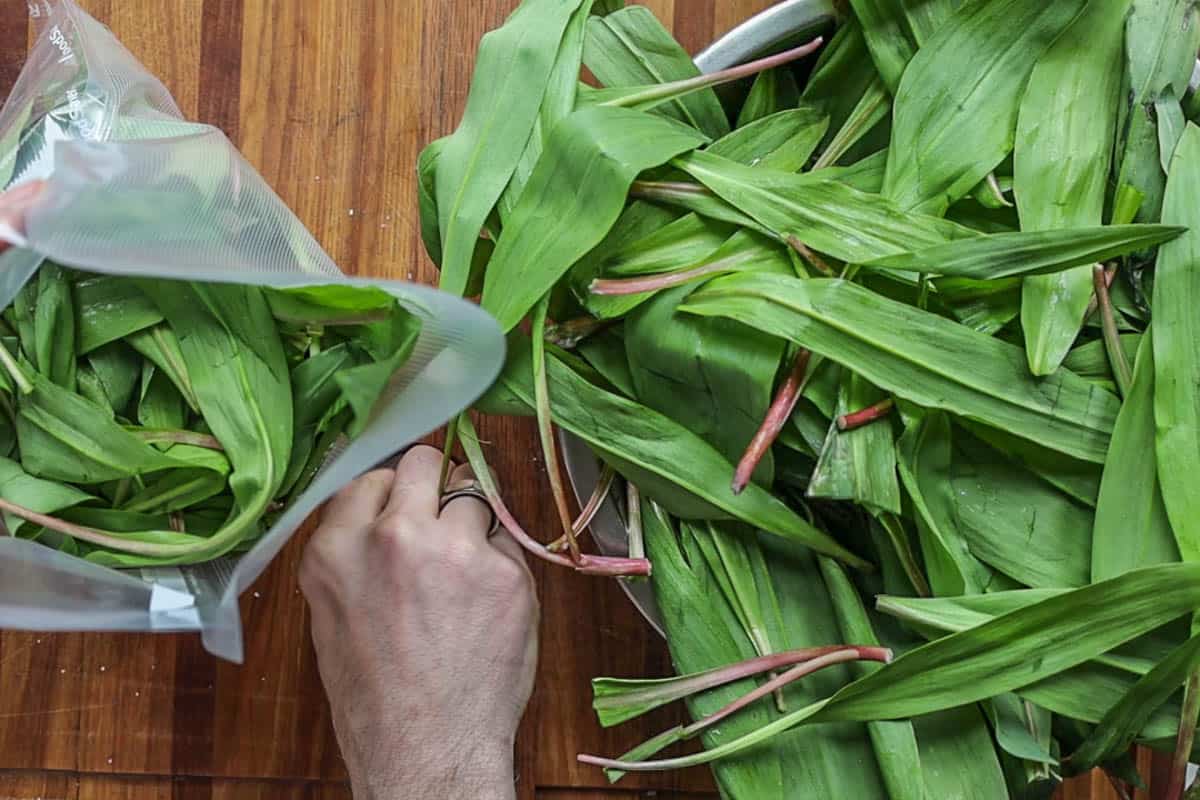
As the leaves aren't mashed up, they keep their shape and integrity, as well as a good meaty texture.
Vacuum sealing also helps control the aroma, whereas if you ferment them in a crock you'll want to do it outside or away from other people-trust me here. Aside from the previous two methods, you can also ferment the leaves in brine.
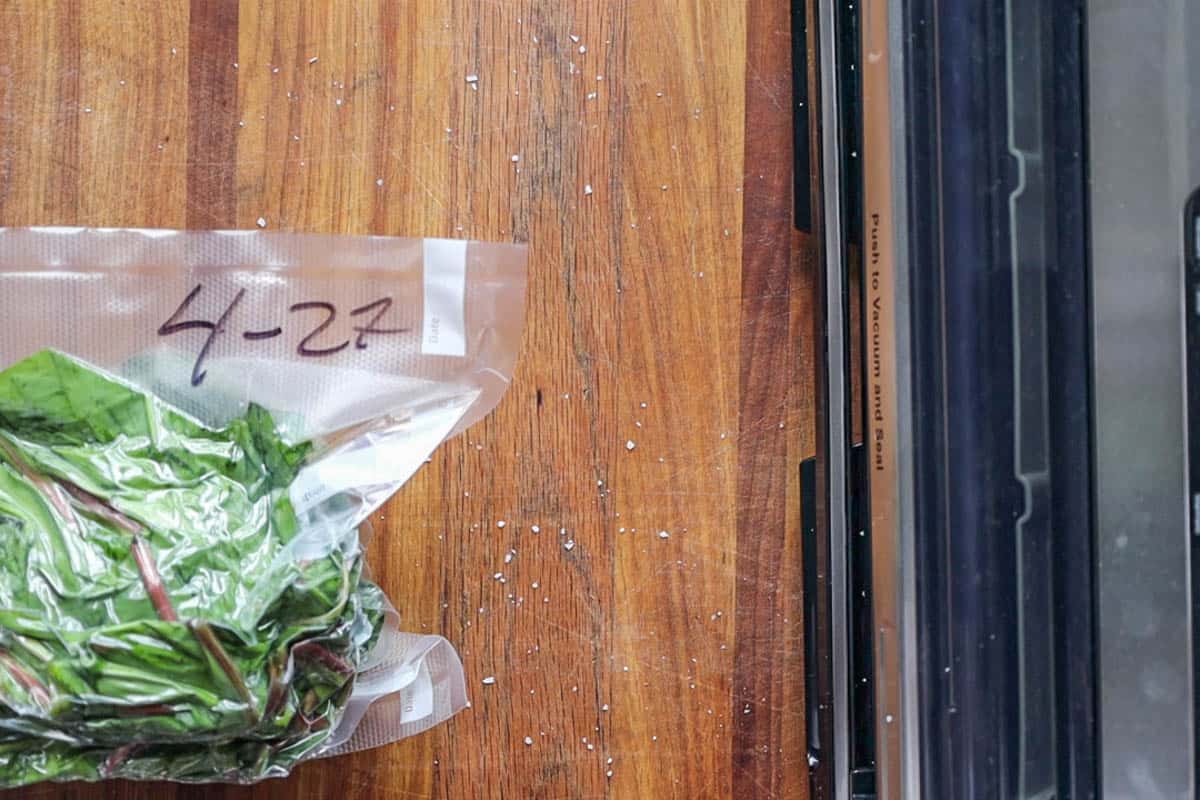
Quick aside, if you don't want to ferment your wild garlic leaves to amaze or potentially shock your friends and family, you can pour cold pickling liquid over fresh greens and they'll keep a similar texture without developing the aroma.
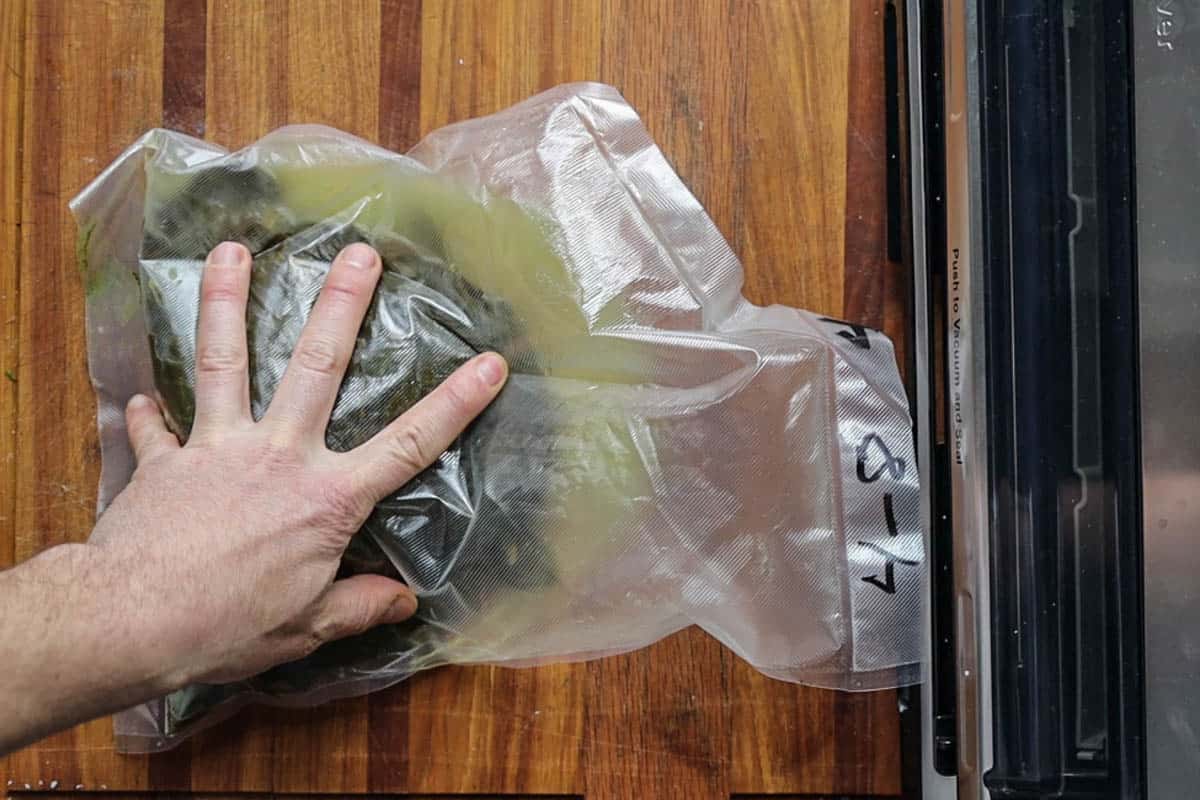
How to enjoy
Once the allium leaves are fermented, the most traditional way to enjoy them seems to be simply mixed with sour cream (smetana) or crème fraîche, and it's the best place to start.
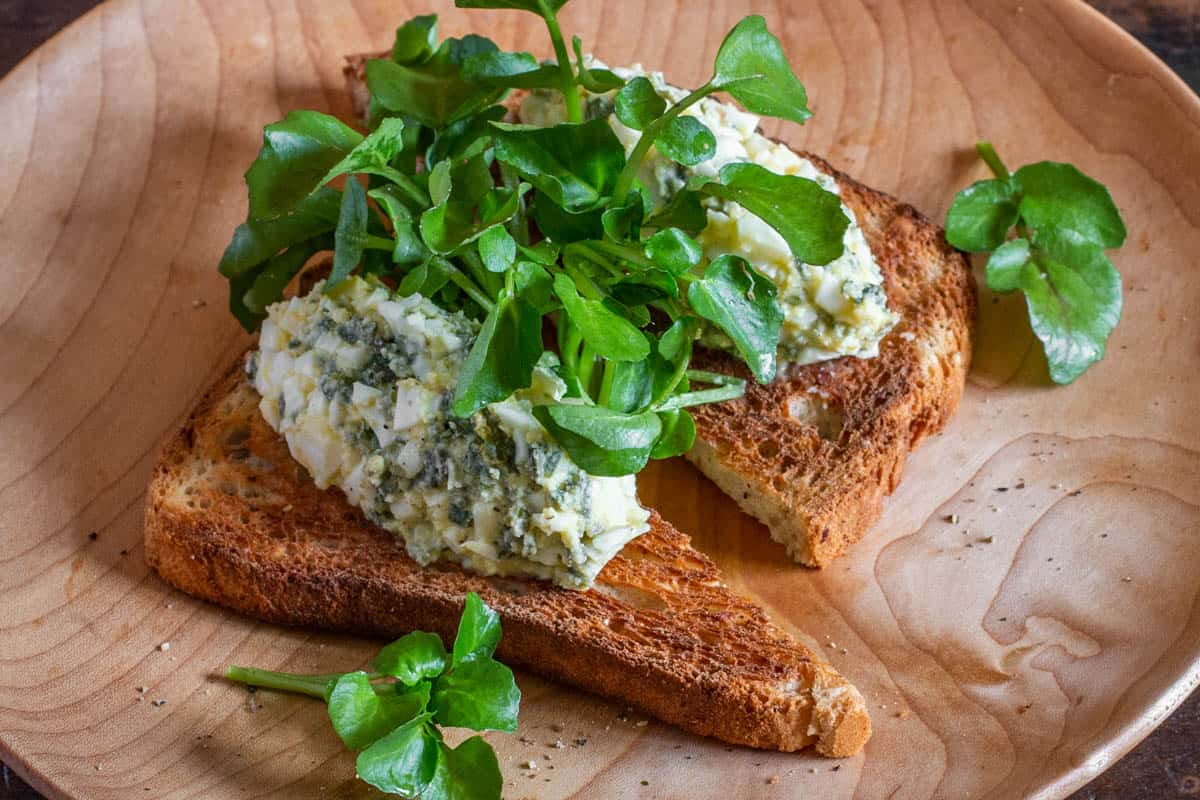
The fat in the dairy helps to smooth out the potent flavor of the soured leaves, calming it a bit and blunting their bite. Eaten on toast, pierogi, pelmeni, or just a cracker, it's a delicacy.
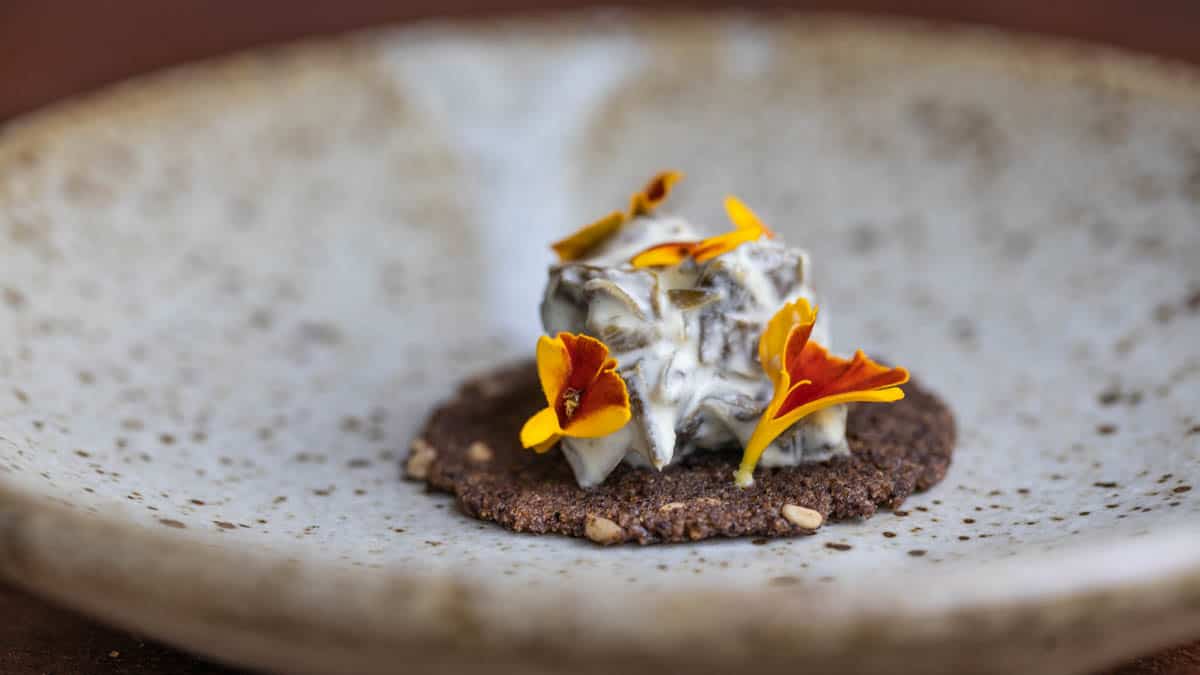
Once I understood the aroma of the finished ferment was natural, I had to play around with different uses for the finished ferment. Here's a few ways I've enjoyed them.
- The leaves by themselves can be pureed with some of the fermenting liquid and used as a condiment. A finished "steak sauce" I made with it is one of the products I've considered bottling and selling.
- Mix with sour cream and use as a garnish for pelmeni and other mild, foods (boiled dumplings, potatoes, noodles)
- Just like the modern version, the leaves are good chopped and mixed into egg salad.
- Other mild salads can benefit from some of the chopped leaves, like potato salad.
- If you increase the amount of liquid and mix with the leaves and water with 3% of the total weight in salt, you'll have extra brine for adding to soups and sauces (remember the original borcht?).
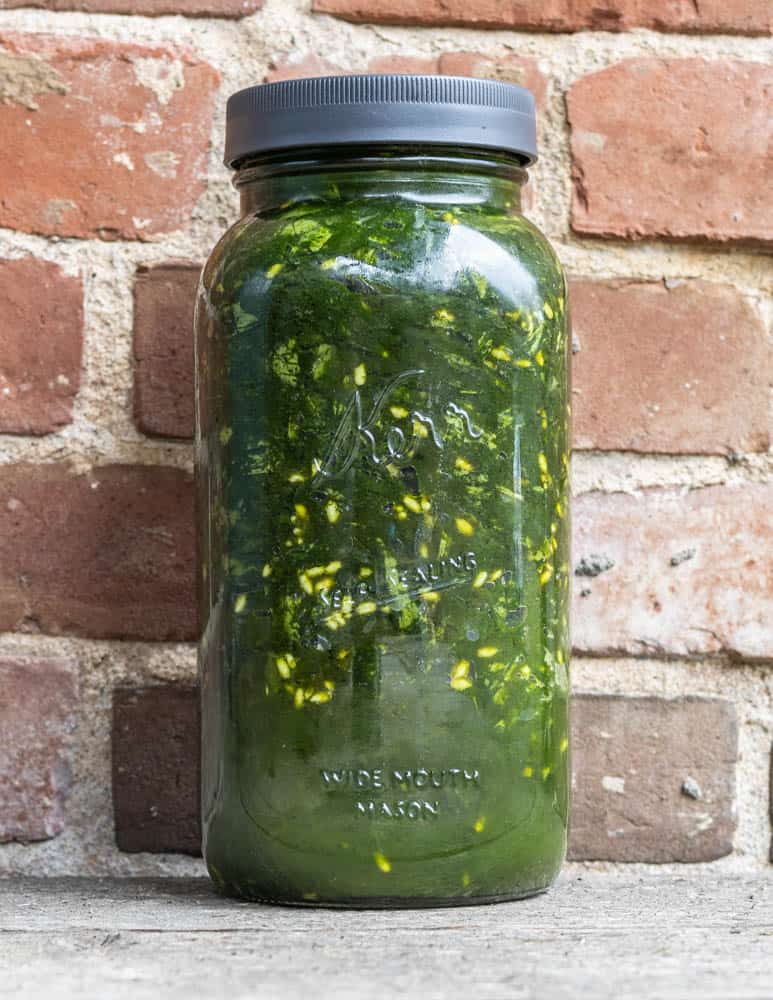
Different plants that will work
You apply this process to a lot of different plants and get a similar effect. The best substitutes will be bear garlic, three-cornered leek, victory onion, or similar allium greens like ramps.
You could try other allium plants and parts like green garlic shoots onion greens and garlic scapes, but the flavor and texture won't be the same.
Cheremsha: Fermented Wild Onion Leaves (Черемша)
Equipment
- 1 Fermentation vessel
Ingredients
- 450 grams (1 lb) ramp or other wild allium leaves you can also use Allium victorialis, A. ursinum, or A. triquetrum, and probably other green parts of different alliums.
- 13 grams (two teaspoons) kosher salt
Serving
- Sour cream or creme fraiche creme fraiche will make a stiffer version, sour cream will be spreadable.
Instructions
- Wash and dry the ramp leaves if they need to be cleaned.
Fermentation
- In a 1 gallon-size vacuum bag, start layering in the ramp leaves, sprinkling with a little salt after each addition, pressing the leaves down to make them fit in the bag.
- When all the leaves and salt have been added, vacuum seal the bag, marking the date on a corner for reference.
- Put the bag into a bowl or other container just in case there's any drips (rare, but possible-inspect the seals to ensure they're sound) and store at room temperature for two weeks, checking on it here and there as you can remember (See note).
Removing carbon dioxide
- As the leaves ferment they will give off carbon dioxide, making the bag puff up. Depending on your ambient temperature this can happen quickly or slowly. When the bag gets noticeably filled with air, pick up the bag, cut off a corner, then seal again. I've never had a bag burst from the pressure but it's possible. Refer to my video here for reference.
- After the fermentation is complete, you can transfer the leaves to a jar and store in the fridge, or leave them at room temperature in a mason jar with a tight fitting lid assuming they're completely covered with brine. They will last a very long time.
Serving
- Using gloves, remove the leaves from the bag or jar, squeezing the liquid back into the container. Chop the leaves with a chef knife until they look evenly chopped, then mix with an equal volume of sour cream or creme fraiche, or just add sour cream until it tastes good to you.
- Taste the finished product and adjust the seasoning for salt and pepper if needed, then refrigerate until needed.
- Serve the fermented leaf spread on crackers, toast, or mix into something like egg or potato salad.


Dan F
I made a couple of pints of these last spring, but was at a loss as to how to use them... until tonight. I was making a simple sautee of zucchini, tomato and shallots and felt that it needed something more. I reached for the fermented ramp leaves, chopped some up and tossed them in, and man, oh man... 10/10 I would do that again! WILL do it again.
Alan Bergo
Remember the ramp steak sauce in my book. I made that specifically so people would have something to do afterward with it.
Elise
Hi Alan,
I’m excited to try this recipe! Is it possible to ferment the bulbs as well or would you recommend against it?
Alan Bergo
Absolutely you can ferment the whole thing.
Doug
Doing this again this year (last year I didn't think I waited long enough).
It's doing the same thing as last time -- after two weeks (vacuum sealed bag) the smell is noticeable outside the bag; a little liquid is inside now, but no puffing up yet. I expect this is normal. Not opening it yet and am just going to wait longer.
By the way -- the smell (through the bag) at this point reminds me of asafetida (aka hing); when I've had that on hand in the past, it was in a double container and stored under the sink. Not at all the same, but it's the closest thing.
Alan Bergo
Hey Doug. Two weeks is the minimum, but you can let it go for as long as you want. I've forgotten about bags in my garage and opened them in the winter. It's so stable-really a bullet-proof way to preserve them. You can obv transfer them to a jar too after the fermentation has leveled out and the pH is dropped. I just did some this week and my bags aren't inflating too much. There should also be visible bubbles in the bag that let you know it's working. I'm here if you have any more questions during the process.
Judielaine
Similar but different: https://theurbannanna.com/2020/08/30/fermented-wild-onion-grass/
I fermented a bit more than a quarter kilo of my walking onion greens in a jar with a one of those ferment locks (and stones) and moved it away from spaces where the spouse wanders. Because, yes, that's an aroma. I am dehydrating the fermented greens as I write, but on a doneness check i found the scent captivating. I want to powder it. I want to add it to savory sauces: needs mustard, was my first thought. I was hunting for more ideas and found this page: mixed with sour cream for a dressing sounds like a great idea. Maybe next time i will try some pre-dehydration.
Alan Bergo
Thanks for sharing Judielaine.
Sam Holmgren
Alan- I have two separate batches in vacuum sealed bags in my garage dated 5/6 and 5/8. I followed the salt/ramp ratio meticulously. A little bit of liquid is present by there is no evidence of gas creation. I suspect the cool weather is the culprit or perhaps I am impatient? Also have a batch of ramp soy sauce I started that same week. I seems like that hasn't transformed either. Thoughts....
Alan Bergo
Sam, puree the ramp leaves in the soy and they'll ferment, I adjusted that a couple weeks ago. It's a slow ferment as it's high in salt. Yes, the cold temperature will slow things down a lot. Vacuum fermenting is very safe though, don't worry.
Mirja
I ended up fermenting over 2lbs of ramp leaves last May in a vacuum bag. The smell was so strong I had to keep it in a 5 gallon bucket outside. If I went to check on it I could smell it from 30 feet away once I opened the bucket. I completely forgot about it over the winter. At this point I'm going to let it ferment for one more full year and see what happens.
Linda
The recipe sounds wonderful! I don’t have a vacuum sealer or bags, however. Would you suggest a Ziploc bag or trying a regular fermentation jar?
Alan Bergo
Linda, I'd do it in a jar. Here's exactly how I would do that: select your jar and take the weight of it while empty in grams. Pack the jar tight, half full with ramp leaves, then weight the ramp leaves down with a clean stone. Add water to cover the leaves. Remove the stone, weigh the jar, then subtract the weight of the jar. Multiply that (the weight of the ramp leaves and water) by .03, then add that many grams of salt. Remove the stone and shake the jar once or twice for the first few days, replacing the stone to keep the leaves under brine. After two weeks, they'll be ready and stinky.
Alan Chomica
I would love to try making this but my three-year old ramps have had all their pickable leaves removed to make fiddlehead/ramp tarts. I plan to use garlic chives and nodding onion leaves but then I looked in the cupboard to seea big jar of baerlach from Germany. Would dry plant leaves contribute to this ferment?
Alan Bergo
Only fresh leaves can be used to make this.
Alan Chomica
I was afraid of that. Thank you for sharing your expertise. I love the things you pull together. They are so inspiring I hope one day we can meet up and conduct a cook-off...
Andrew
I started making these after buying salted mustard greens for a Chinese recipe (thank you Fuschia Dunlop) and realizing they were a lacto ferment. Now I use them regularly for their flavour and funk. Thank you for sharing Cheremsha, its delicious.
P.S. Maybe I'm weird but I love the smell of them fermenting.
Alan Bergo
I like the smell too, but some of my friends and family do not approve.
Judy
I thoroughly enjoy traveling down these rabbit holes with you! Ramps smell pretty strong when we have a bucket of them in the back of the station wagon--I can't imagine having an even stronger aroma!
Alan Bergo
Thanks Judy. There's a part of me that looks forward to the ramp smell in the car. 🙂
Sam Holmgren
If this is the same recipe we sampled at your book signing at the farm last July, I am all in! Now all we need here in the Twin Cities is some actual spring weather. Thanks Alan I’m really enjoying your book and your emails.
Alan Bergo
Yes it is. Some of my favorite things from the book will eventually be on this site, especially ones that benefit from expanded explanation, since books abbreviate so much. It will take years though.